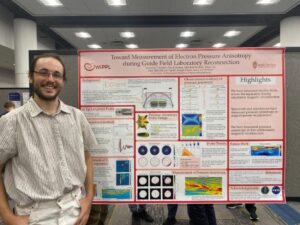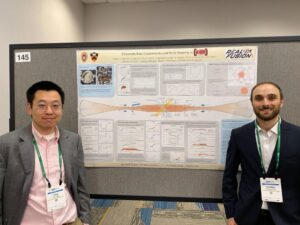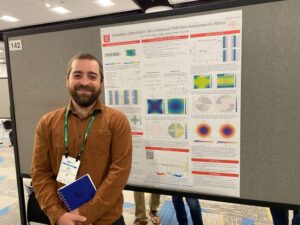Physics Faculty Attend Major Plasma Physics Conference in Atlanta
By Christopher Woolford, Physics PhD student
Over 200 faculty and students represented the University of Wisconsin–Madison at the annual American Physical Society Division of Plasma Physics (DPP) research conference in Atlanta last October. The APS DPP conference presents an excellent opportunity to learn about the newest and cutting-edge research in plasma physics.
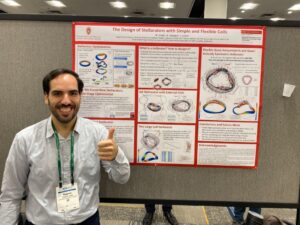
Rogerio Jorge, an assistant professor of physics at UW–Madison, presented his work on stellarator optimization alongside several of his students. Stellarators are a type of nuclear fusion reactor that uses twisted magnetic fields to confine fusion reactions.
“The weather was amazing, and the conference is a great opportunity for collaborations,” Jorge says.
This year, the APS DPP conference benefited from attendance by a new generation of plasma physicists that has seemed to have grown in recent years.
“I had not seen so many younger plasma physicists in years at an APS DPP conference,” says Paul Terry, a professor of physics at UW–Madison, attributing the rise in attendance to the influx of private companies interested in nuclear fusion.
Eduardo Neto, a postdoc at UW–Madison working with Jorge, gave a talk on his exciting work on Stellarator optimization. This work was the result of an ongoing collaboration with Proxima Fusion and IST in Lisbon, Portugal.
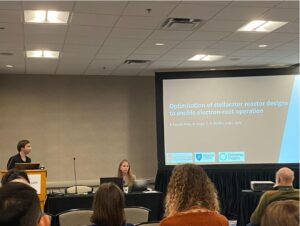
“The most challenging part of this project was getting a lot of different codes to work together,” Neto says. “Startup companies have a strong interest in preventing tungsten buildup in Stellarators.”
Neto plans to continue his collaborations with Proxima Fusion and explore optimizing other parts of Stellarators such as turbulence. His advice for students interested in Stellarator optimization is to gain broad knowledge of plasma physics and nuclear fusion.
The APS DPP conference will be in November this year in Long Beach, California.
